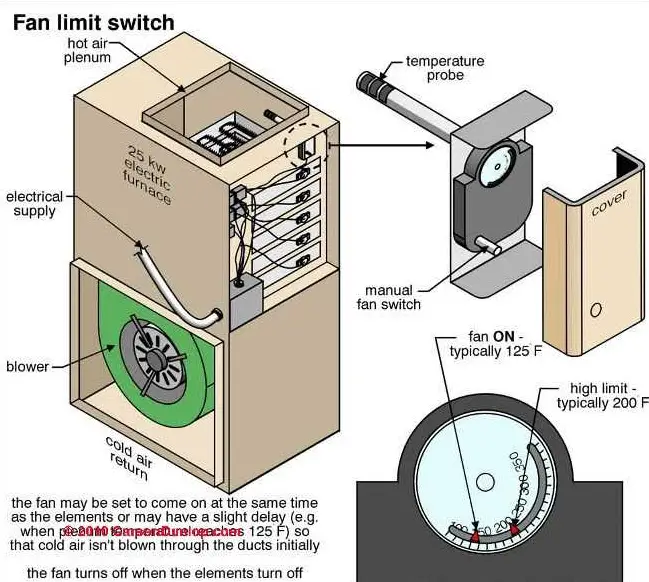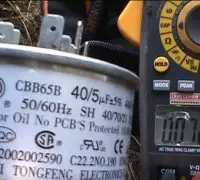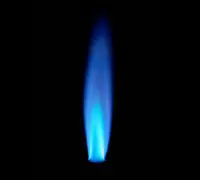You know that your furnace is appropriately working if it begins to run when the house’s temperature is lower than the set temperature in the thermostat. A furnace blower fan will push the heated air through the house until the set temperature is achieved again. Sometimes, the furnace blower fan doesn’t stop running, and it doesn’t turn off either.
When the furnace doesn’t stop running, not only that the utility bill increases, but you also find the temperature in the house to be uncomfortable. Obviously, your furnace has developed a problem, and you should address it right away so that it doesn’t aggravate it.
Page Table of Contents
What causes the blower fan not to stop running?
Several issues could cause the blower fan to run without stopping. No matter the severity level, every time a component of the furnace develops a problem, troubleshooting and fixing is essential. Proper maintenance and prompt fixing are fundamental for the durability of your gas furnace.
Here are the most common situations that make the blower fan not to stop:
- The control wiring may have developed a problem; the insulation on the wiring could be worn out.
- The fan select switch on the thermostat is set to the “on” position.
- A defective relay, fan sequencer relay, fan limit control, or a circuit board with sticking contacts. The age and type of furnace count for developing this kind of problem
- The limit switch could pose a problem, or it’s open.
Let’s see the details for each of the situations and possible solutions.
The fan select switch
It’s effortless to address the problem as you only have to turn the switch on the thermostat on automatic. If you do it and the problem isn’t solved, you will have to check the other possible causes for the blower fan, not stopping.
It may seem like an impossible situation, but it happens quite a lot that the thermostat isn’t turned to automatic, making the blower fan run continuously.
Issues with the control wiring
Some may refer to the situation as a short circuit. For whatever reason, two wires are touching one another, maintaining the circuit completed without any control.
Older thermostat wire may present degraded insulation. Once the insulation is gone, the wires will touch inside the thermostat wire bundle. The problem is caused by the red and green wire connecting somewhere in the bundle.
If you’re lucky enough, this is causing the problem. Examine the thermostat wire terminations at the thermostat and the furnace. A problem with the wiring has an easy fix. If the problem isn’t with the wiring, you will need to pull a new thermostat wire from the thermostat. You will need to change the red or green for some extra wire (when one is available).
Defective board or control relay
The problem will occur differently for different models of the furnace. Modern gas furnaces come with a control board, whereas older models come with a sequencer relay or necessary peanut relay.
The relay on/off request from the thermostat will shut the fan on or off, alternatively. Every control of the furnace comes with contacts and coils inside. Once the coil is energized, it will open/close the contact points according to standard open/closing.
You will mainly have to replace the relay or the control board to solve the problem. In fan limit control, sometimes it could be sticking, and returning will be necessary. No matter the situation, something is sticking, and you will need to replace the device for solving the issue.
Issues with limit switch
When the furnace is overheating, a limit switch is supposed to open. The burners or heat source will shut off, and the fan will operate until the limit switch closes. Sometimes, the limit switch sticks open, causing the fan the keep on running. But your furnace may not heat. When the limit switch is the culprit, you should replace it.
However, it’s always better to address the overheating problem for rectification and fixing. Some other issues could cause overheating, and you need to check them too:
- Too many supply vents are blocked or closed, causing low airflow. It would help if you always left the supply vents open, as your heating system is made to push a specific amount of airflow. Closing the vents will lower the airflow, causing overheating.
- The clogged or plugged dirty air filter also decreases the airflow. You have to clean and replace regularly the air filter so that the furnace operates properly.
- A collapsed duct somewhere in the house reduces the airflow
- A low fan motor may run at a slower speed because it’s about to fail. You will have to replace it to solve the problem.
The temperature is set too high.
When the furnace filter is clean and the fan is set to “auto,” you should decrease the thermostat temperature. Give it a couple of seconds to see if your furnace stops running or not. Sometimes, the furnace may run because it tries to maintain the proper temperatures, especially if it’s freezing outside.
You didn’t derate the furnace.
A gas furnace that is recently installed also requires to be derated. Derating is when the gas pressure is adjusted for matching the elevation. If the adjustments aren’t made properly, the furnace will run continuously and eventually overheat.
The furnace will operate, but because the gas pressure isn’t adjusted correctly, it will overheat and shut off. However, the fan will still blow to cool it down. The furnace will soon turn on and off repeatedly, and the fan won’t ever stop. You will have to call the HVAC technician to derate the furnace. Unless you’re an HVAC professional, you shouldn’t try derating the furnace on your own.
Conclusion
Most of the problems causing the blower fan to keep running are control problems, whereas some relate to safety controls.
Therefore, you should always call the HVAC technician to troubleshoot and fix the problem. It’s also essential that you never override a safety control on your furnace, even if it’s for a short amount of time. An experienced HVAC professional will know how to address the problem, especially if it’s related to safety.






